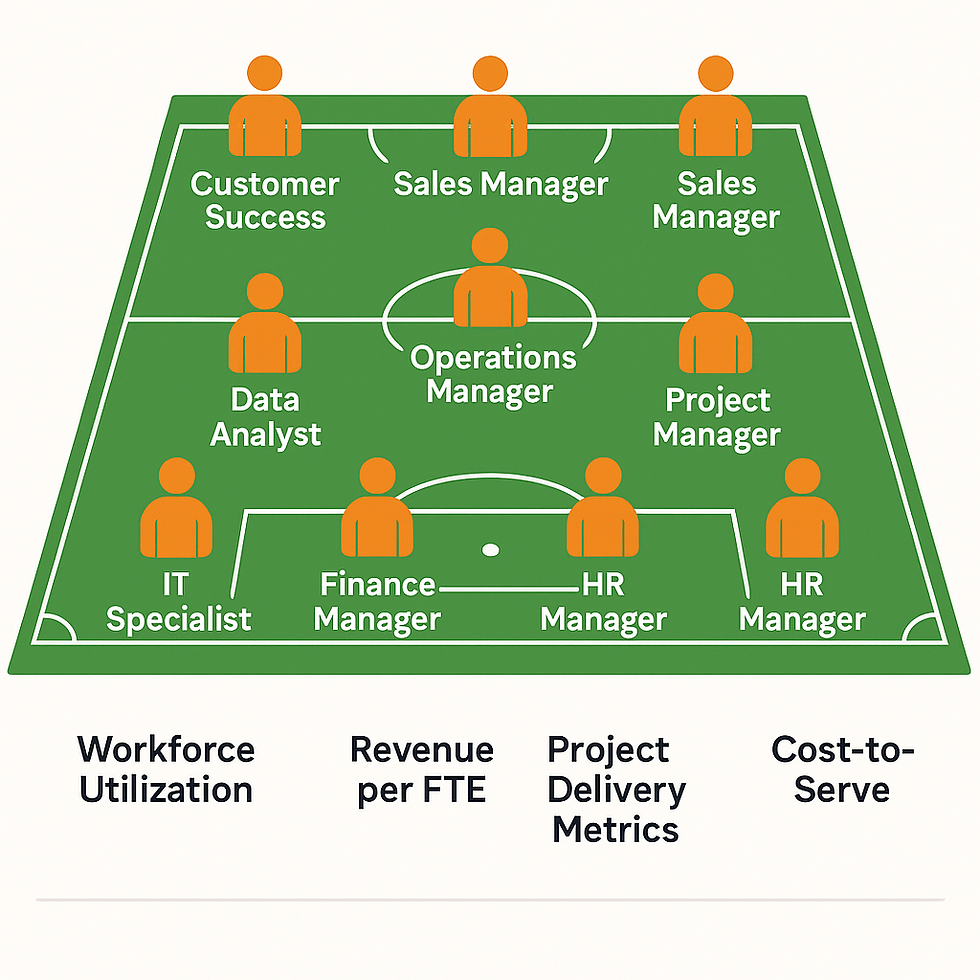Workforce Planning Best Practices: Build by Role, Not by Name
- John Silverstein

- Sep 9
- 2 min read
Updated: 1 hour ago

Too often, workforce planning becomes an exercise in managing individuals instead of designing for the organization’s success. A more effective approach is to plan by role, similar to how a coach builds a sports team: the goal isn’t to have a star player at every position, but to make sure each position is filled with the right skills to win games.
Why Role-Based Planning Works
Flexibility: Employees come and go. Roles and responsibilities endure. Planning by role ensures continuity even as personnel changes.
Objective decisions: Avoids over-reliance on personalities or tenure. Keeps focus on the work that must get done.
Alignment with strategy: Makes sure staffing matches business objectives, not just individual career paths.
Anchor Workforce Planning in KPIs
Planning should be grounded in measurable outcomes, not just headcount. Key metrics include:
Utilization Rates – Are you maximizing the capacity of your existing team before adding more roles?
Revenue per FTE – Are new hires driving proportional value to the business?
Project Delivery Metrics – Are roles mapped to what’s needed to deliver on time and on budget?
Cost-to-Serve – Are staffing levels balanced with customer profitability?
The Sports Team Analogy
A basketball coach doesn’t start with 12 point guards. They plan for the right mix: point guard, shooting guard, forwards, and center. Business leaders should do the same:
Define the critical roles that align with strategic priorities (e.g., data analyst, sales manager, customer success).
Establish depth charts so that if one person leaves, the team isn’t left exposed.
Evaluate performance by role against KPIs, not just individual effort.
Putting It Into Practice
Start with your strategy – what outcomes do you need to achieve?
Define the roles required to deliver those outcomes.
Measure role performance with KPIs like utilization, revenue impact, and delivery timelines.
Adjust regularly – treat your workforce plan like a living playbook, not a one-time exercise.
👉 Takeaway: Workforce planning works best when you think like a coach — focus on filling the positions, measure success through role-based KPIs, and always adapt to the game in front of you.



